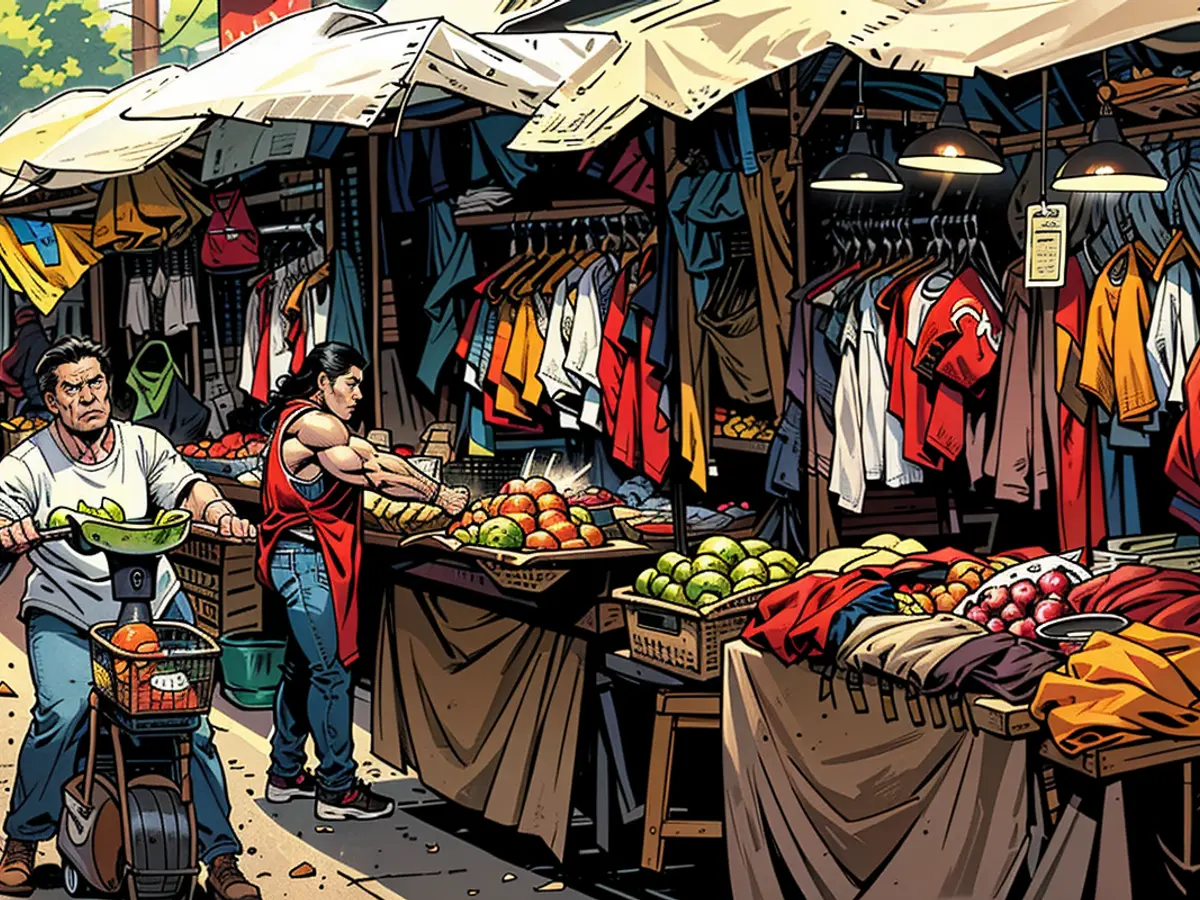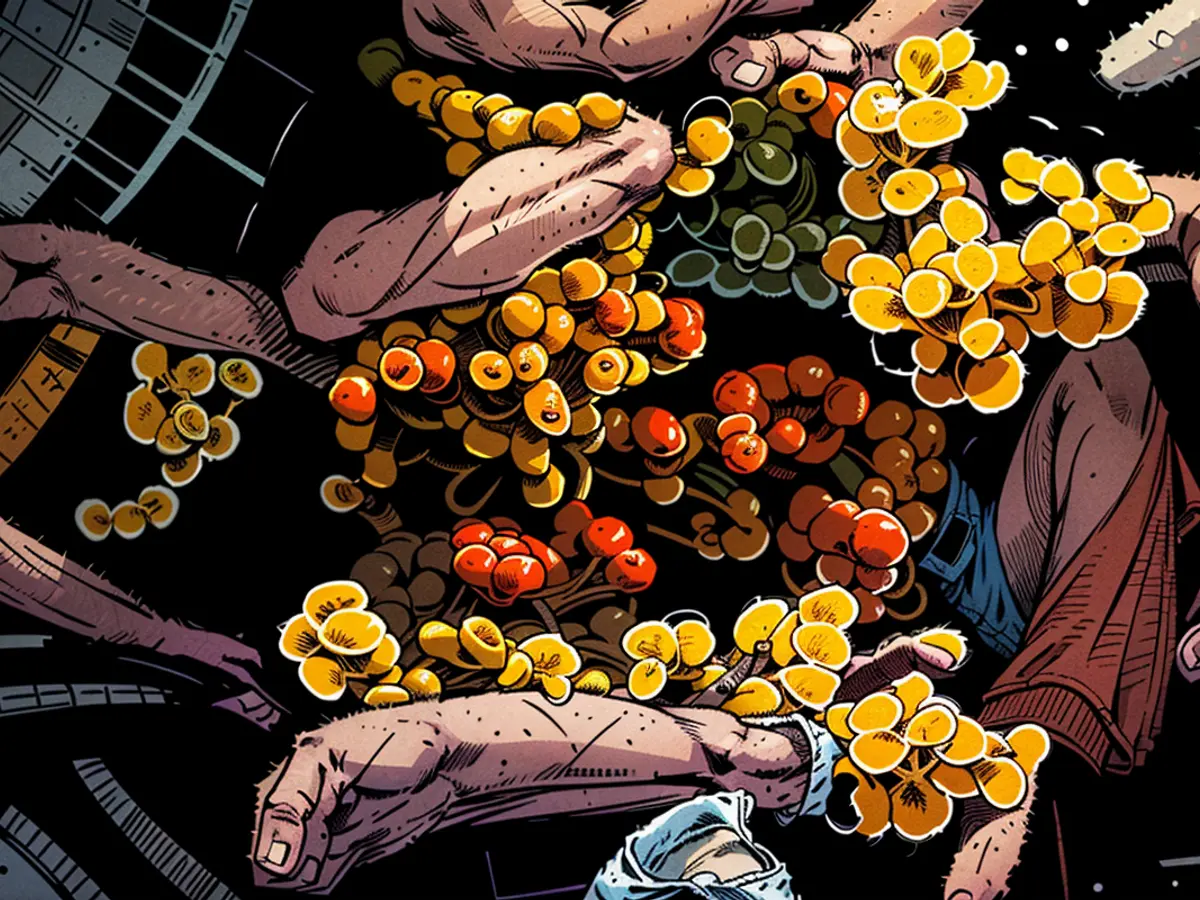Exploration into the Genesis of the Covid-19 Virus
Despite numerous investigations, the source of the Covid-19 pandemic remains a mystery. A recent study suggests that the virus originated from the bustling Huanan Seafood Market in Wuhan, China. While this study is viewed as significant by experts like Christian Drosten, it is insufficient to definitively confirm the market's role in the pandemic's inception.
More than four years have passed since the outbreak, yet the pandemic's genesis continues to be elusive. Initially, theories swirled about a laboratory accident in Wuhan, with the virus spreading from the city to the market where initial infection cases were reported.
However, the majority of evidence supports a zoonotic origin, i.e., the virus jumping from wild animals to humans. This is the conclusion reached by researchers from the United States in a study published today in the prestigious journal "Cell." They analyzed over 800 samples collected from the Huanan Seafood Market and its surroundings after its closure due to the Covid-19 outbreak on January 1, 2020. Additionally, they analyzed the SARS-CoV-2 gene sequences of the first infected individuals.
Bridge the Knowledge Gap
Previously, a Chinese CDC evaluation of these samples was published. However, the specific animal species that could potentially serve as SARS-CoV-2 intermediate hosts remained unclear. The current study aims to fill this gap in knowledge. The research, originally released as a preprint, has now been published in its final, peer-reviewed form.
The researchers performed metatranscriptomic sequencing on the samples, analyzing all DNA and RNA sequences to identify the various organisms present, such as viruses, bacteria, plants, animals, and humans.
Common Ancestor and Widespread Wildlife
The study revealed that the virus found on the market shares the same common ancestor as the SARS-CoV-2 virus from which the pandemic originated. This correlation aligns with the virus's initial presence on the Huanan market.
The data also pointed to an increase in SARS-CoV-2 positivity near and within a wildlife cage facility nearby. DNA from various wild animals, including civet cats, bamboo rats, and raccoon dogs, which had previously been identified as potential intermediate hosts, was detected in all samples.
Virologist Christian Drosten endorses this finding. "The data provides further evidence for an animal origin of the virus and its connection to the Huanan market," he says. "It is strong evidence. The virus detected in certain suspect samples is very similar to the reconstructable origin diversity of the virus. Furthermore, both the pandemic's founding lineages were detected on the market, which is best explained by multiple transitions from animal to human. Only when viewed in conjunction with the results of other studies does this picture become very clear."
Doctor Isabella Eckerle, a virologist from Geneva, concurs. "All aspects of the study investigated provide compelling arguments that the market was the site of the leap of SARS-CoV-2 from an animal host to humans, and the earliest pandemic sequences were present on the market," she states.
Human-to-Human Transmission Possibility
Like Drosten, Eckerle cannot rule out the possibility of infected humans introducing the virus to the market. However, the viral RNA was most frequently and convincingly detected around the wildlife trade. "Given that people moved all over the market while animals were only sold in one corner, this accumulation seems unlikely for a purely human introduction, such as by a visitor," she explains.
However, Richard Neher of the University of Basel points out that a concentration of positive samples at a market stall selling animals can be explained by both infected humans and infected animals. There were likely over a hundred infected individuals on the market shedding significantly more virus than potentially infected animals. "RNA is also unstable, so the distribution of viral RNA in samples from early January provides little insight into possible transmissions from animals to humans that may have occurred in late November 2019," he adds.
Lacking Direct Virus Samples
The other experts consulted by the Science Media Center consider the study's results insufficient evidence for the zoonotic origin of the pandemic. To definitively clarify this, direct virus samples from wildlife and humans taken before and during the first infection events are required, explains virologist Friedemann Weber from Giessen.
"If such samples were taken and preserved in the past, it might still be possible," says Christian Drosten. "In particular, raccoon dogs are suspected. The study now provides rough geographical clues as to where these might have been kept at the time. Such a follow-up investigation would only be possible in China, and only if animal samples were taken and preserved."
Perhaps Too Late
A definitive proof, according to Isabella Eckerle, would be "the detection of an original SARS-CoV-2 genome, i.e., the virus sequence that underlies all subsequent viruses of the pandemic and represents the missing piece of the puzzle between the precursor viruses from bats and the viruses of the pandemic." Especially if such a virus is found in a clearly identifiable sample, such as a swab from an animal.
Eckerle isn't convinced that the missing piece of the Covid-19 puzzle will be found. With so much time passing by, it's plausible that only a few creatures served as intermediate hosts. If this tiny host population was wiped out or eliminated during the market shutdown in early 2020, then this missing piece might be nonexistent anymore.
In the eyes of most experts, a lab accident as the starting point of the Covid-19 pandemic isn't a definitive no. However, they generally consider it less likely. As stated by Drosten, despite ongoing investigations, there's still no robust scientific proof for the lab origin theory. Yet, he acknowledges that more and more pieces of evidence have been piling up in favor of the market theory.
Eckerle shares the same perspective. Besides the initial data and the findings from the recent study, the resemblance to the first SARS outbreak in 2002/2003 is striking. For her, it seems very probable that "once more in an identical context, another SARS virus has managed to jump the species barrier."
The following are the main categories discussed in the analysis: the potential connection between the Huanan Seafood Market and the pandemic's inception, the role of wildlife as potential intermediate hosts, and the investigation into a lab accident as a possible origin.
This study provides strong evidence that supports an animal origin of the virus and its connection to the Huanan market, according to virologist Christian Drosten.








